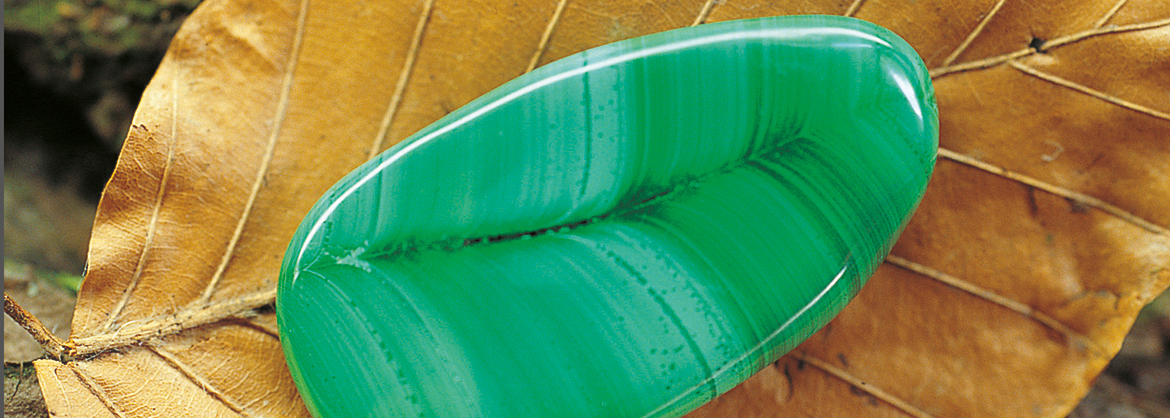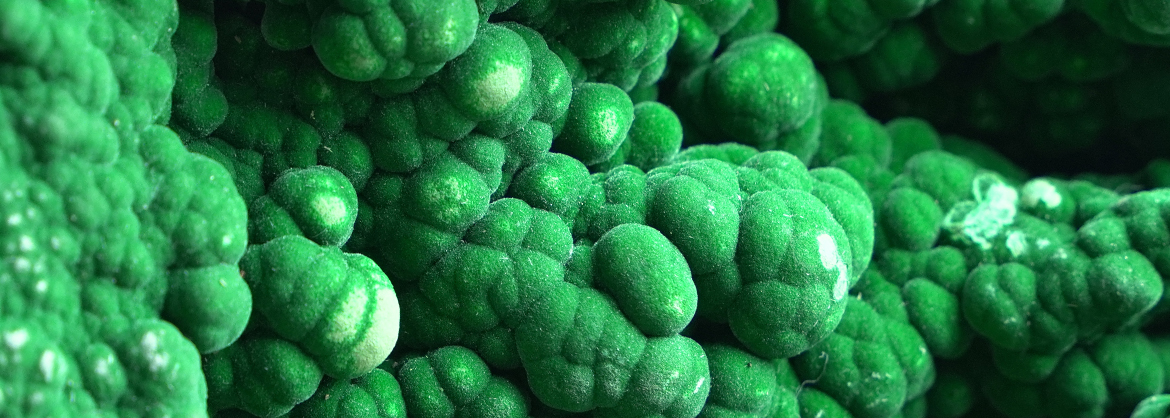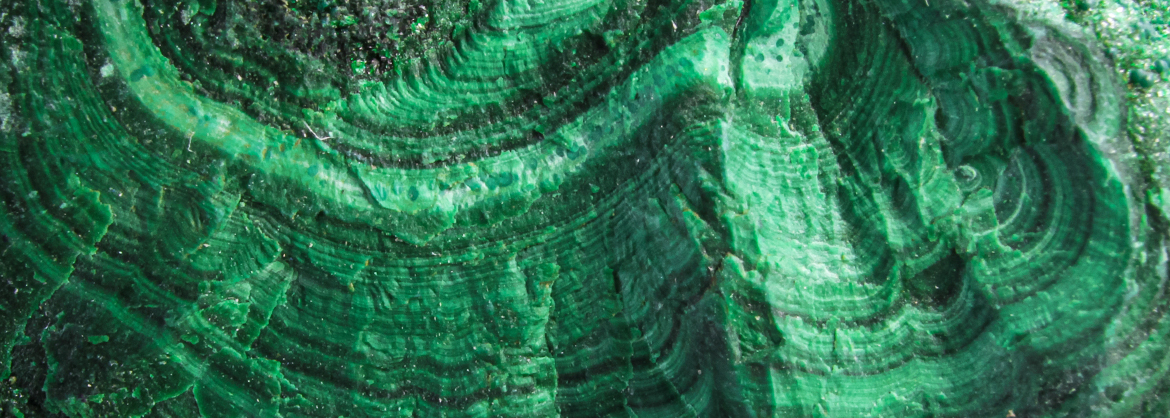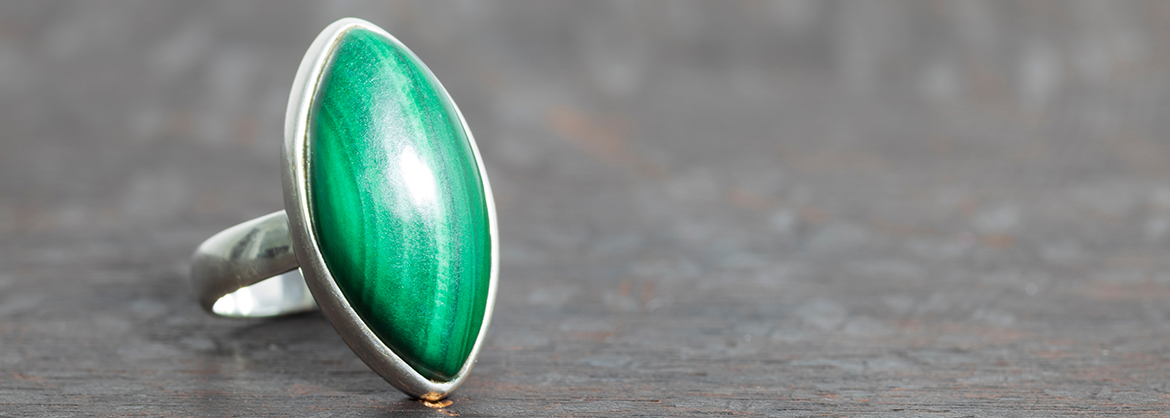
Malachite - bearing, effect and application of the gemstone
Malachite supports the imagination and the inner imagery. Memories and longings, which have long been forgotten, are reawakened and often these can now be lived out. But also the empathy and the willingness to confront are strengthened, so that intensive work can be done on the relationships with fellow human beings
Mineralogical profile Malachite
Chemical formula, mineral class: Cu2[(OH)2/CO3] + H2O + (Ca,Fe); basic copper carbonate from the mineral class of carbonates
Formation: secondary to the action of oxygenated and carbonated seepage water on copper-bearing rock.
Color, luster: green; Glass or silky luster
Transparency: opaque, rarely translucent
Crystal system: monoclinic
Mohs hardness: 3.5 - 4
Cleavability, fracture: perfect; splintery, earthy fracture
Appearance: mostly racemose aggregates or dripstone-like nodules with banded or radial radiating structure
Localities, main supplying countries: Australia, Germany (Betzdorf/Siegerland), Chile, France, Russia, Namibia, Romania, Zambia, Zimbabwe, USA, Zaire (Democratic Republic of Congo). The majority of the merchandise such as Tumbled Stones, Donuts and chain strands originate from Zaire.
Malachite tumbled stones, drilled focal components, donuts and more here in our wholesale web store

Origin of the name Malachite and synonyms
The name Malachite comes from Greek malache or moloche = mallow, after whose color he is already named by Pliny as "Malvenstein". Because of the low hardness of Malachite the name is possibly also derived from Greek malako = soft. Synonyms include atlase ore, mountain green, green copper water, koppar green, copper green, copper hydrophan, copper ochre, and slate green. A misleading trade name is silver peak jade.
Malachite donuts, stringed beads, tumbled stones and more here in our wholesale web store
Historical aspects of Malachite
Malachite is the subject of many legends and stories. In the Urals, for example, it was consecrated to the copper miner, an embodiment of Venus, whose ambivalent favor sometimes brought good fortune and sometimes bad luck to the miners who mined Malachite. In ancient Egypt, women used Women used the powder of crushed Malachite as eyeshadow and people carved amulets, scarabs, and statuettes from the stone. In the ancient cultures Malachite was a stone, which was assigned to the femininity and accordingly was always consecrated to a goddess: in Egypt to Hathor, in antiquity to Aphrodite or Venus, in Europe to Freya. Since the Middle Ages, the stone has been used in popular belief against women's ailments and for obstetrics.

Usage of Malachite
Malachite is used as a gemstone in arts and crafts. For example, in the Kremlin in Moscow there are entire columns made of Malachite, which comes from the Urals. Also because of the wood-like banding in different shades of green Malachite is as a very popular as a decorative stone. The production of handicrafts from Malachite is complex and expensive, because special protective measures are necessary. As a pigment, finely ground Malachite has been in use since ancient times with the name "cold green" for wall paintings in use. A famous example of the use of Malachite in painting is the green curtain in the background of the Sistine Madonna of Raphael. However, an organic dye called malachite green is not derived not from the mineral Malachite.

Applications of Malachite in gemstone healing
Malachite promotes the desire for adventure and intense life, it deepens the emotional life and supports the imagination and decisiveness. The sense of aesthetics, beauty and sensuality, friendship and justice are themes, which are attributed to the Malachite. The green gemstone helps to better empathize with others and to be able to relate to their thoughts and feelings. Malachite helps to make things conscious: Wishes, needs and ideals become visible, but their implementation is left up to each individual.
Malachite jewelry, donuts, stringed beads and more here in our wholesale web store